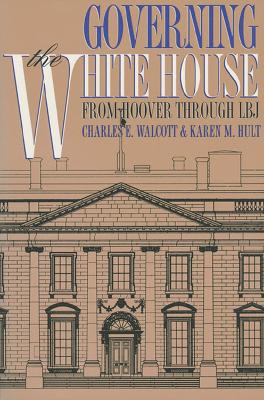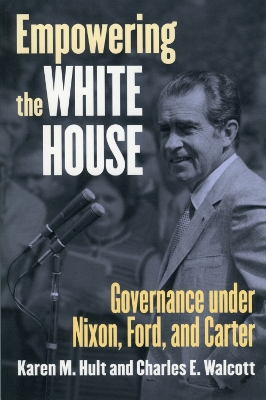Studies in Government and Public Policy
2 total works
Using organizational theory to analyze what at times has been a rather ad hoc and disorganized office might seem quixotic. After all, the White House Office exists within a turbulent political environment that encourages expedient decision-making. And every four to eight years it must be reinvented by presidents who have their own theories and preferences about how to organize a staff to serve their policy needs.
But Walcott and Hult argue that White House staffs are not simply puppets of presidential preference and style. Yes, staff structures evolve primarily from presidents' strategic responses to external demands. But those structures in turn significantly influence how the executive branch perceives and responds to further demands.
The first part of their book lays out the theoretical argument. The second examines White House outreach: congressional liaison, press relations, personnel selection, executive branch oversight, and interest group and intergovernmental liaison. The third focuses on White House handling of policy development and implementation. The fourth analyzes staff structures that facilitate the operation of the presidency itself: presidential writing and scheduling, staff management, and cabinet coordination. The book concludes by identifying general patterns in the emergency, nature, and stability of governance structures in the White House.
Original and instructive, Governing the White House provides a much-needed primer on the inner workings of the White House staff and will be an essential volume for anyone studying the presidency.
This theoretically informed and well-researched study explains how Nixon changed and expanded the institutionalized presidency and how that affected the Ford and Carter administrations. Nixon ushered in a new stage in the modern presidency by organizing and using his increasingly complex staff in new ways that have persisted beyond the 1970s to this day. To a greater degree than any predecessor, Nixon systematized outreach, legal advice and policy formulation. His White House staffing, then, has come to be regarded as a "standard model" that influences incoming presidents regardless of party affiliation. Leavening this organizational study are revealing accounts of how Nixon, Ford and Carter staff operated behind the scenes in the West Wing. Anyone needing to know how the White House worked during those presidencies - or how it has worked since - should find this book useful.

